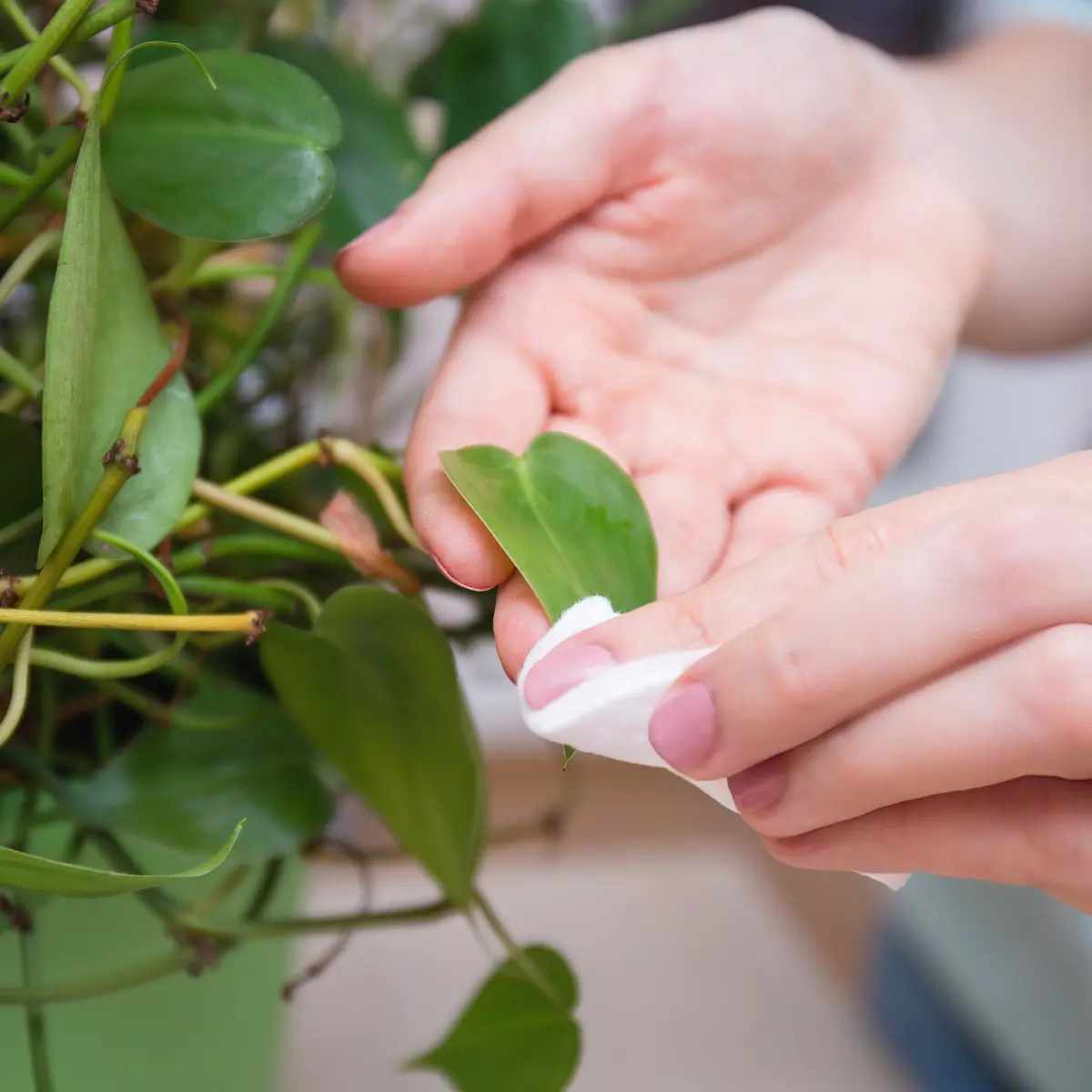
Small white cottony clumps have appeared on your plant’s stems or leaves?
It’s very likely mealybugs.
They may go unnoticed at first, but can quickly become a major infestation if left untreated.
Here’s everything you need to know to spot, understand, and eliminate this pest.
Mealybugs are sap-sucking insects that feed on sap. There are several hundred species, but the most common types are scale insects, armored scale insects, and mealybugs.
The most frequent one found indoors is the mealybug, easily recognized by its white, cottony appearance and its reddish-brown smear when crushed.
It only measures a few millimeters and often hides in the crevices of stems, between and under leaves, and even in the soil.
Mealybugs are especially fond of succulents, orchids, and hoyas — but they can attack all kinds of houseplants.

Mealybugs thrive in warm, poorly ventilated environments. Dry air often encourages their presence, but poorly managed humidity can also work in their favor. They're most common in spring and summer.
Several factors contribute to their appearance:
- A warm, dry atmosphere;
- A weakened or stressed plant;
- A newly introduced, already infested plant;
- Poor air circulation or mismanaged humidity.
Mealybugs slowly weaken the plant. They suck out the sap, slow down growth, and can cause yellowing, wilting, or even leaf drop.
They also secrete a sticky substance called honeydew, which can lead to sooty mold (a black fungus), fungal diseases, and attract other pests.
If left untreated, the plant may eventually die.
To effectively treat an infested plant, it helps to understand the mealybug’s life cycle. Like many insects, it goes through several stages before reaching adulthood.
Eggs: the female lays up to 600 eggs in a small cottony mass, usually hidden in crevices or at the base of leaves. Hatching occurs around 7 to 10 days later.
Nymphs (or larvae): tiny and highly mobile, they look for a place to settle and feed. This is the most vulnerable stage for treatment. This development phase lasts 2 to 4 weeks.
Adults: once mature, they develop the characteristic white, powdery coating, attach themselves to the plant, feed on sap… and lay eggs again. Females don’t fly but crawl slowly. Males, which are rare, can fly but live only a few days.

Acting early often means you can get rid of them without chemicals.
Here’s what to do:
- Isolate the plant to avoid spreading the infestation.
- Remove mealybugs manually with a cotton swab dipped in 70% rubbing alcohol or diluted white vinegar.
- Gently clean the leaves with warm water and black soap.
- Spray a natural solution: water + black soap + a drop of vegetable oil. Repeat after 7 to 10 days to eliminate any new larvae.
Be careful: some delicate-leaved plants may react poorly to black soap or vegetable oil. If in doubt, test on one leaf and rinse the treatment off after a few hours to avoid burns or marks.
When mealybugs are well established, you’ll need to act more firmly:
- Repot the plant: discard the soil, clean thoroughly (or change the pot), and inspect the roots;
- Prune heavily infested parts if needed (don’t forget to disinfect your tools with alcohol before and after);
- Use a stronger treatment: neem oil, plant-based pyrethrum, or a mealybug-specific insecticide (always follow the instructions);
- Repeat treatments every 7 to 10 days
A few good habits will help keep them from coming back:
- Check new plants before bringing them indoors;
- Ventilate the space regularly;
- Keep humidity at the right level, especially in winter;
- Wipe down leaves from time to time;
- Check stems and leaf undersides regularly.
In short, mealybugs are not a death sentence. The earlier you catch them, the easier they are to eliminate. With some observation, the right care, and a few simple actions, your plants can keep thriving in peace!